Are you interested in learning about conversion value in Google Ads? Do you wish to grasp the methods of evaluating campaign performance? If so, this blog post is precisely what you need! Let’s delve into the concept of conversion value and its vital role in optimizing your ad campaigns to attain maximum success.
What is Conversion Value?
A conversion value refers to a numeric value assigned to particular conversions, serving to quantify their significance to your business.
The reality is that not all conversions carry the same weight. Let’s take 2 hypothetical customers into account:
- Customer one clicks on your Google Ad but quickly leaves your website without further engagement.
- Customer two also clicks on a Google Ad, navigates to a landing page, proceeds to click the “BUY NOW” button, and successfully completes a purchase.
Clearly, the conversion value associated with customer two far surpasses that of customer one. By providing a means to measure the worth of each conversion, the conversion value metric assists your business in identifying where to prioritize efforts and allocate advertising resources effectively.
How to Calculate Conversion Value in Google Ads?
Determining the conversion value of your Google Ads campaigns is vital for campaign optimization. Utilizing a conversion value calculator facilitates the determination of optimal bids for each conversion.
Additionally, you can establish rules that automatically allocate values to completed actions, simplifying result tracking and analysis. Furthermore, leveraging attribution models enhances understanding of the influence of various campaigns on overall conversion values, enabling more thorough optimization strategies.

Importance of Conversion Value
The importance of Conversion Value lies in its ability to provide crucial insights and benefits for advertisers and marketers:
ROAS Measurement
Conversion Value allows businesses to accurately measure the return on ad spend (ROAS) of their advertising campaigns. By assigning a monetary value to conversions, businesses can determine the profitability of their marketing efforts and make informed decisions about budget allocation.
Performance Evaluation
Conversion Value serves as a key performance indicator (KPI) for assessing the effectiveness of advertising campaigns. It helps businesses understand which campaigns, keywords, or ads are generating the most valuable conversions, enabling them to optimize their strategies for better results.
Optimization
Understanding Conversion Value enables marketers to optimize their campaigns for maximum effectiveness. By focusing on high-value conversions, businesses can allocate resources more efficiently and improve their overall return on investment.
Strategic Decision Making
Conversion Value data provides valuable insights that can inform strategic decision-making processes. Businesses can use this information to identify opportunities for growth, refine targeting strategies, and tailor marketing efforts to better meet the needs of their target audience.
Attribution Modeling
Conversion Value is essential for accurate attribution modeling, which helps businesses understand the contribution of each marketing channel or touchpoint to the overall conversion process. This information is critical for optimizing marketing campaigns and allocating resources effectively across different channels.
Difference Between Conversions and Conversion Values?
A conversion represents any specific action that you instruct an advertising platform to monitor. These actions span from preliminary steps toward profitability, like downloading a guide or initiating a call, to the final achievement of a sale.
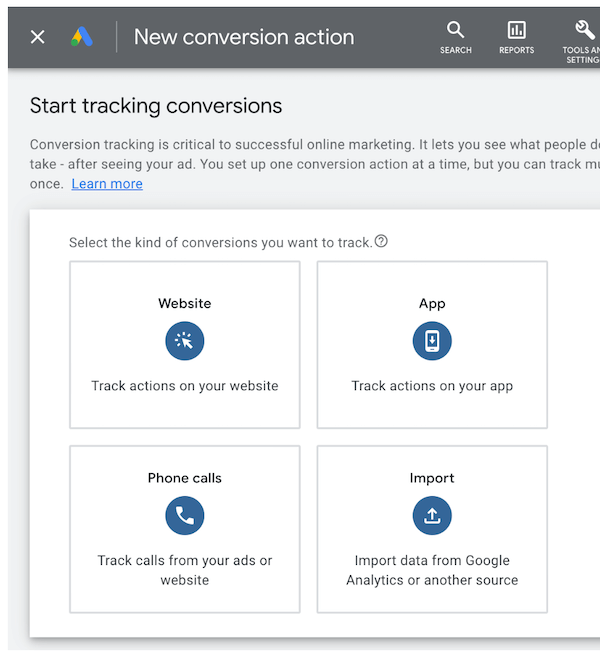
Conversion values represent the monetary value assigned by you to a completed action within the ad platform.
For instance, if I designate a conversion action to monitor all phone calls generated from my Google Ads advertisements, Google will track these calls as long as I set the action as a primary one. However, the valuation of these calls, whether it’s $1, $100, or any other amount, relies on my inclusion of the conversion value within the action settings.
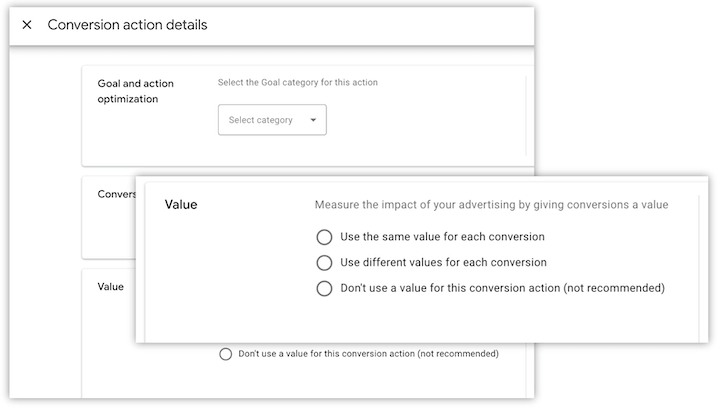
In summary, while it’s possible to track conversions in Google Ads without assigning conversion values, doing so can result in data weaknesses for both the ad platform and internal reporting purposes.
How to Set Conversion Values?
Assigning a conversion value in Google Ads involves informing Google about the monetary worth of each conversion, such as a sale or a sign-up, to your business. This aids in understanding the effectiveness of your ads and determining where to allocate your advertising budget.
To set up conversion values, follow these steps:
- Access your Google Ads account to create and manage your ad campaigns, including setting up multiple conversion actions.
- When creating a conversion action, navigate to the “Value” section.
- Choose between a static or dynamic conversion value.
- Input the specific value and select your preferred currency.
- Update or insert the tag within your website’s code. This step allows the conversion tracker to receive details about each sale, sending this information back to Google Ads. If you lack experience in coding, consider seeking assistance from a web developer to ensure proper setup.

Static Conversion Value
A static conversion value entails assigning a fixed numerical value to every conversion. In this approach, you determine the worth of each conversion and consistently apply that value to all instances.
For instance, if you establish that each sign-up on your website holds a value of $10, Google Ads will attribute $10 to every sign-up recorded.
This method is effective when all conversions hold equal significance to your business.

Dynamic Conversion Value
Dynamic conversion value permits you to assign different values to individual conversions based on specific criteria. Although more intricate, this method offers a more precise depiction if the worth of each Google Ads conversion varies.
For instance, if your products are priced differently, each sale may hold a unique value. By establishing rules, Google Ads can discern the value of each sale depending on the product sold. Consequently, it enables more accurate tracking of the revenue generated by each conversion.
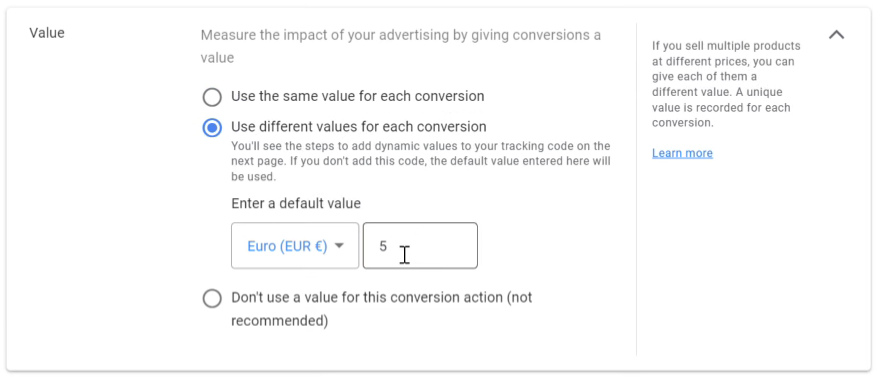
What is Maximize Conversion Value In Google Ads?
This bid strategy is engineered to extract maximum value from your campaign while adhering to your budget constraints.
Employing advanced artificial intelligence (AI), this smart bidding strategy optimizes and establishes bids for each auction, prioritizing the attainment of the highest possible conversion value, such as sales revenue, lifetime value, or profit margins.
Here’s a breakdown of its functionality:
Without a target ROAS (Return on Ad Spend)
In the absence of a set target ROAS, Google Ads directs your budget towards maximizing conversion values for your campaign. This approach is ideal if your focus lies on the value of conversions rather than a specific return on investment.
With a target ROAS (Return on Ad Spend)
If you specify a target ROAS, the maximize conversion value bidding strategy operates to attain the maximum conversion value achievable while meeting that target ROAS. This method proves beneficial when your campaign is geared towards achieving a particular ROI objective.
Bid adjustments
This strategy adjusts your bids in real-time based on current data. Typically, your existing bid adjustments are not utilized, except for device bid adjustments of -100%.
Setup
Before implementing this smart bidding strategy, it’s essential to configure conversion tracking with transaction-specific values. Additionally, you have the option to customize your values using conversion value rules tailored to different customer types, devices, or geographical locations.
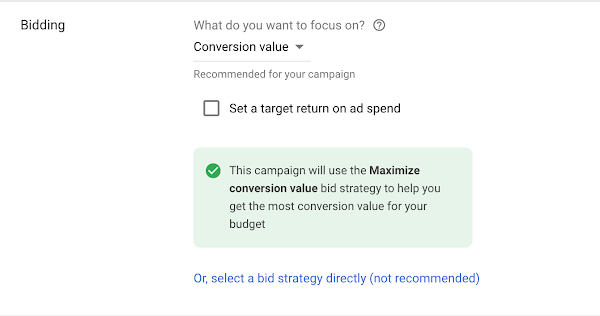
Strategies for Maximizing Conversion Value
Once you’ve established your conversion values, whether static or dynamic, you’ll be able to automate your bid strategy to target return on ad spend (ROAS). Configuring your bid strategies to prioritize ROAS is an additional measure to guarantee goal achievement. To implement this approach, you merely need to select the campaign using the checkbox on the left and then choose “Edit”.
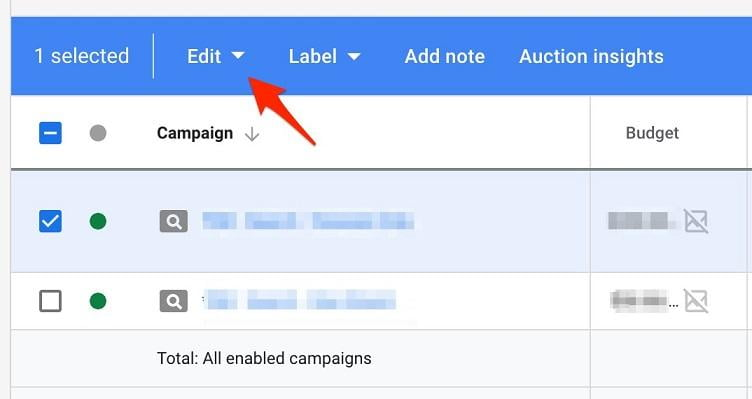
Next, you’ll need to choose “Modify bid strategy”.
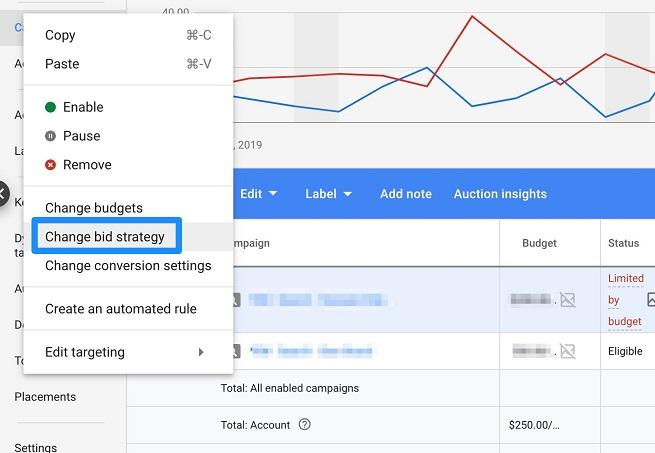
At this point, you’ll have the opportunity to opt for “Target ROAS”.
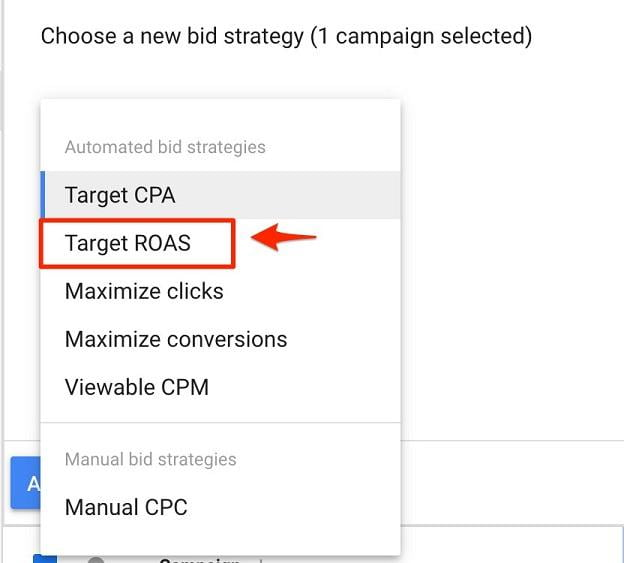
Wrap up
Conversion values in Google Ads are the ultimate metric separating profit from loss. While dynamic conversion values may pose challenges, the effort pays off. Assigning non-monetary values can gauge overall profit potential. Remember, not all conversions are equal; tailor reporting, strategy, and optimizations accordingly.









